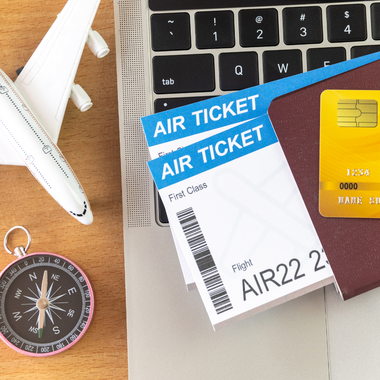
- Four minutes read
Why should travel merchants use multiple card acquirers?
Travel companies can work with multiple card acquirers to improve cash flow. Here’s how.
Healthy cash flow is essential to the ongoing success of travel merchants, but can be hindered by credit card payments. That’s right – the most-used payment method for long-haul flights, holidays, and hotel stays, according to Paysafe Lost in Transaction 2023 research – can seriously harm liquidity. Why is this the case?
The key issue is the complex relationship between merchants and payment acquirers who settle and process card payments. Card acquirers are liable to refund cardholders if a travel company faces serious financial struggles and folds, so it’s understandable they demand security when processing payments.
The issue, however, is that they hold large percentages of cash reserves from merchants until the service is delivered. This can take months between a payment and a customer’s travel getting underway, at which point significant damage may have been done to the company’s cash flow. This less-than-ideal situation is made even riskier when merchants only work with a single acquirer.
Here’s how using multiple card acquirers can help travel companies spread risk and make credit card payments work for them.
The challenges of using one card acquirer
Many travel companies are moving away from traditional, single acquirer models, and card acquirers are happy to embrace this change. This is because card acquirers don’t want to harm merchants’ cash flow, and would prefer to tie up less capital for less time – something that would benefit all parties.
Here are two reasons why relying on one card payment acquirer is risky for travel companies:
- No fallback option. Travel merchants working with a single acquirer are at risk of being left without a safety net if the acquirer suddenly leaves the market. Many travel companies found themselves in this situation during the global pandemic. If a merchant’s only means of processing card payments suddenly disappears, the company and its customers will suffer massive disruption.
- Carrying too much risk. Neither party benefits from a single-acquirer approach. The acquirer responsible for a merchant’s total business carries far more risk, and so will justifiably require greater security. As a result, they’ll demand higher fees and hold onto funds for longer – a challenging situation for both acquirer and merchant.
So what does the alternative look like?
Collaborate better with smart tools
So how can merchants work effectively with multiple card acquirers? Contracting with different acquirers separately is perhaps the most obvious approach, but may not encourage efficient collaboration between acquirers.
A positive alternative would be for acquirers to collaborate using tech tools known as payment orchestration platforms, which automatically choose the best acquirer for each payment accepted from the merchant.
These platforms allow acquirers to share data, basing their selection on criteria such as location, transaction amount and currency. By carrying out this process for every single transaction, and giving acquirers access to detailed data, they can better understand their share of the fulfilment exposure for each merchant.
Bureau bank collaborations also deliver more bespoke collaboration between merchants and multiple acquirers. This allows acquirers to work together to meet the specific needs of a merchant, based, for example, on the countries in which the travel company operates. The lead (or bureau) bank handles the technical and contractual integration, delivering a friction-free process for the merchant.
The benefits of working with multiple card acquirers
With the right structures in place, merchants can work with multiple acquirers to spread risk and ensure greater coverage if an acquirer exits the market. Some acquirers may even reduce their security requirements to mirror the model’s diminished financial exposure – driving greater cashflow benefits.
And travel companies are looking at an exciting year ahead. Our recent consumer research, Lost in Transaction: The Disposable Income Report, found that 43% of consumers are spending more or the same on package holidays, and 42% are doing the same for flights.
With the industry continuing to recover and flourish, merchants should look to a multiple-acquirer approach to ensure credit cards deliver growth, rather than inhibit it, and ensure they have the liquidity needed to achieve success.
To learn more about the challenges facing travel merchants, download our Traveling Light whitepaper.




